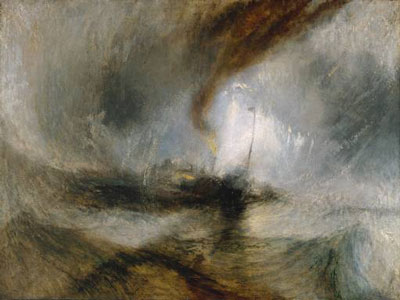




________________________
Since I never saw Star Trek in its original incarnation from September 1966 to June 1969, all my experience is conditioned by coming to Star Trek by way of a marathon ten-best weekend festival on our national CBC network in November 1985. At that time syndicated Star Trek episodes were shown in order of production, and the CBC was able to offer its festival as a twenty-year anniversary of the creation of the pilot episode 'Where No Man Has Gone Before', shown at the beginning of the celebration.
And what a marvellous episode it was (still is), mythic in its grandeur. Then, as now, we worried about the dangers of space travel, of the consequences of meddling with forces beyond our control. This tale of crossing the galactic barrier confirmed our worst fears, with an innocent mortal burdened by godlike ambitions and powers of destruction as a result of a terrible accident beyond his control.
Over the festival weekend we saw nine other episodes, each quite wonderful in its own unique way, each coloured by that introductory warning of imminent amorphous danger. By then we were addicts, and searched out episodes on various channels until we knew the dialogue before the words left a character's mouth — He's dead, Jim — when we knew it might be time to stop. For a while.
Today the episodes are shown every weekday on the specialty Canadian Space channel, and we see them as originally shown — all fifty or so minutes per episode rather than the 45-minute result of a hacking and deleting process that made several stories quite unintelligible even after several viewings. That's the good news.
The bad is that we are made painfully aware that television network executives in 1965-66 arrived at decisions as to order of appearance that surely ran counter to the intentions of the series creators, the effect for a thoughtful viewer being eerily similar to film adaptations of favourite novels by placing the individual elements of the series under sudden merciless scrutiny.
Did no one notice that the capricious selection of 'The Man Trap', 'Charlie X', and 'Where No Man Has Gone Before' as Episodes 1, 2 and 3, respectively, resulted in first-time viewers being subjected to three opening episodes in a row where the plot hinges on the crew of the The Enterprise having to choose between killing or being killed — a phrase actually spoken in the case of human teenager 'Charlie X'?
Is this the picture network executives intended to convey about future space travel, about the Starship Enterprise and its five-year mission:
... To explore strange new worlds. To seek out new life and new civilization. To boldly go where no man has gone before:
To kill or be killed ?
How much better to have followed the original order of production.
In the pilot episode 'Where No Man Has Gone Before', we know at all times where we are, what is happening, and why. There being no extraneous characters, no mystery to unravel, we are free to concentrate wholly on the story and the role played by each person essential to the plot, free to decide if we wish to know more of this Starship Enterprise and its five-year mission, and of the crew who will accompany us on the voyages.
In a hilarious (and character-revealing) early scene, we make the acquaintance of an abstracted Captain Kirk as he plays three-dimensional chess against the methodical Mr. Spock — and wins handily, to Mr. Spock's obvious surprise and barely-hidden irritation. The Captain made an illogical move: he should have played the rook, Mr. Spock observes plaintively to fellow officer Gary Mitchell who joins them in the elevator. Kirk makes an eloquent motion across his throat and Mitchell grins delightedly.
There is no humour to be found in a later shocking encounter when Mr. Spock points out the necessity of killing Mitchell before it is too late. (Kirk decides instead to exile his friend to the inhospitable planet on which they are forced to land for repairs.)
Only after a chilling sequence during which Mitchell uses his extraordinary powers to cause the death of the friend and crewman assigned as his guard does Kirk contemplate the stark choice of killing or being killed.
'The Man Trap', on the other hand, is all mystery, all uncertainty, all interpretation. At no time do we have any idea what is going on, nor why we should care. There will be a place for these elements of discovery in the plot of a later, fifth Episode, for example, when we might be intrigued and amused by an encounter between the laconic Mr. Spock and a flirtations Miss Uhura, during which the former explains that there is no moon on Vulcan, and the latter replies that she's not surprised — but not now, not yet. Not in the getting-acquainted first episode of a new series.
It is in the ending of 'The Man Trap' that its deficiencies as Episode 1 become most apparent, nowhere more than by comparison with the pilot episode which properly should have begun the series. What could be more poignant and satisfactory than Kirk reading his official commendations into the captain's log in 'Where No Man Has Gone Before'? Or more conducive to remembered fear and repulsion than the necessary destruction of the salt-dependent creature in 'The Man Trap'?
Neither Uhura nor Dr. Leonard Bones McCoy are present in 'Where No Man Has Gone Before'. This is not an accident needing repair, but a consequence of beginning with the foundation, and moving up to the other characters when proper attention can be accorded their particular personalities.
In fact, 'The Corbomite Maneuver' (chosen as episode #10 by network executives), with its more relaxed style and story invoking the brazen possibilities of the game of poker rather than the intensity of chess, is the perfect choice for Episode 2.
We see Kirk in sickbay for his quarterly physical checkup with the affable Doctor McCoy, learn that Kirk is hostile toward McCoy's attempts to psychoanalyze him, learn that although every other member of the ship's crew is concerned only with the mission and obeying the captain's orders, McCoy alone has the health of each crewmember at heart. When it comes to Kirk's treatment of his erstwhile protege Bailey, we learn that the doctor has the ability to exert his will against the Captain by placing an entry into the medical record holding Kirk responsible for Bailey's breakdown. And how could it be less than inevitable that Kirk will accuse McCoy of bluffing — and then find salvation for The Enterprise and its crew precisely by the use of bluff? Not chess, Mr. Spock. Poker!
We learn that Uhura is understandably apprehensive by the possible consequences of the poker game, yet as an experienced communications officer remains entirely composed and disciplined as the countdown proceeds toward the destruction of The Enterprise, even while rookie engineer Bailey loses control and shouts, jostling Doctor McCoy.
We learn that Yeoman Rand has been imposed on a reluctant Kirk rather than his having chosen her to wait on him hand and foot; that given his preference he would have selected a less attentive male — a fact less than apparent in 'The Man Trap' and 'Charlie X'.
Once established, the implications of these introductory relationships will be felt throughout the series.
When viewing the Episodes in production order, we learn the infinitely subtle ways in which the perils and perogatives of rank manifest themselves in the interactions of Kirk with every other member of The Enterprise. The affectionate banter with Doctor McCoy, for example, is quite unlike the quizzical teasing of Mr. Spock. For example, when Mr. Spock inquires plaintively whether it has occurred to his captain that there's a certain ... inefficiency ... in constantly questioning him on things Kirk has already made up his mind about, and Kirk smiles and replies simply, It gives me emotional security, we can't imagine that tone being used with anyone else.
In 'Where No Man Has Gone Before', Mr. Spock refers to a Vulcan ancestor having married an Earth woman, while 'The Corbomite Maneuver' has Spock remark that the mysterious Balok reminds him of his father. Scottie interjects a heartfelt, Then may heaven have helped your mother! And Spock answers reprovingly, On the contrary, she considered herself a most fortunate Earth woman. Already we find ourselves interested in what seems at the outset a highly mismatched couple. (Need I add that making the acquaintance of Mr. Spock's parents in 'Journey to Babel' was one of the highlights of the ten-best Festival that caused my initial addiction to Star Trek.
Most importantly, we are both told and shown the mission of The Enterprise and its concern for all lifeforms encountered as it zips about the galaxy mapping the assorted stars. Even though the distress signal from the small ship carrying the unknown Balok might well prove to be a trick, Kirk nevertheless leaves Spock behind to captain The Enterprise to safety while he and McCoy put their own lives in danger in order to launch a rescue party.
In other words, when presented as Episode 5, 'The Man Trap' will invoke all the inherent tragedy of the necessity to eliminate the salt creature, last of its kind.
And finally, though you wouldn't know it from 'The Man Trap', nor from 'Charlie X', Star Trek has an abundance of the type of interesting, intelligent women mentioned in my list of elements common to the five bright particular stars chosen for this Sandsifter Five collection.
'Where No Man Has Gone Before' begins the series as it means to continue, in the person of the dedicated and lovely Dr. Elizabeth Dehner, scientist and psychiatrist, who chooses and follows her tragic destiny to its courageous end. We see her delight as Mitchell demonstrates his powers by turning the barren planet on which they are exiled into a paradise of clear-running brook and bright shrubbery and flowers; we are lured into hoping that the couple can be spared further harm. Neither is responsible for the accident which has turned them into superhuman beings revealed by eyes that shine with an unearthly glow. But already it is too late for Mitchell, and the inevitable runs its course.
The character of Eve McHuron in 'Mudd's Women' is hardly less interesting or courageous — or doomed in a certain sense. In this third Episode we become aware that no matter how outlandish the plot, how seemingly alien the characters and settings, all science fiction — all fiction — deals ultimately with human beings. And earthly mysteries and illusions. Let it be noted that as early as this Episode 3, we are reminded that while the crew of The Enterprise is engaged in the glamour of its mission, other men are condemned to lonely lives and back-breaking work as miners of lithium crystals on the likes of storm swept planet Rigel XII.
Consider the treatment (being turned over to the proper authorities) meted out by Kirk to the villainous but funny and all-too-human Harry Mudd, who has plotted to take over The Enterprise, and how it compares to the planned fate of 'Charlie X', who has embarked on a similar endeavour. Not once are we shown the slightest trace of the human in the character of this thoroughly nasty and manipulative youngster. (Unlike pre-accident Gary Mitchell comforting the frightened young female yeoman, for example.) Certainly the boy's dealings with Yeoman Rand arouse embarrassed contempt rather than sympathy for what should be the universal human plight of unrequited love.
And thus it becomes possible for Captain Kirk to discuss the cold-blooded killing of this human child. To be tolerated, perhaps, in an Episode 7, after the mission has been stated and restated, shown and re-shown. Not so in the network choice of Episode 2.
In my opinion, the network's biggest problem was to confuse the exception with the rule, failing to realize that you have to establish the rule before exceptions are permitted to prove a point. Once we are shown Captain Kirk's hard-driving obsession with excellence on the part of himself and his crew, we will understand Uhura's above-mentioned attempt in 'The Man Trap' to engage Mr. Spock's interest. The mice will play when the Captain's away.
The same holds true for the scene of the crew relaxing in 'Charlie X': first the hard work, and then the party.
* * * * *
In just three episodes, then, Star Trek as produced by its creators has shown mastery of every element contained in my list of common characteristics of the bright particular stars making up this Sandsifter Five series. (I've already mentioned the presence of interesting, intelligent women):—
Humour, and a playful use of the English language;
Context, as in belonging to one specific place and time. In Star Trek, no matter how exotic the planet landscape or alien the inhabiting creatures, we are never more than a scene away from the realization that this series can have originated only in the idealistic fervour and ferment of America in the 1960s.
Unity of purpose or singleness of vision as exemplified in Kirk's stirring opening declaration of the five-year mission of The Enterprise.
Youthful optimism, an infinite willingness and capacity to take pains, and lack of cynicism, all present, preclude the possibility of the shifty and untrustworthy gloss of the sentimental.
Esteem. There are two methods of defining this quality: by quoting from the dictionary, or by bringing to mind the manner in which the Captain and members of the crew of The Enterprise treat each other.
And in particular Examination of What it is to be a man. In all of Star Trek is there one Episode that does not deal with this particular element?
Finally, each Episode shows an unmistakeable provenance either from Fairy Tale journey of discovery, or from Myth, which would be the more static certainties of the bridge of The Enterprise.
________________________